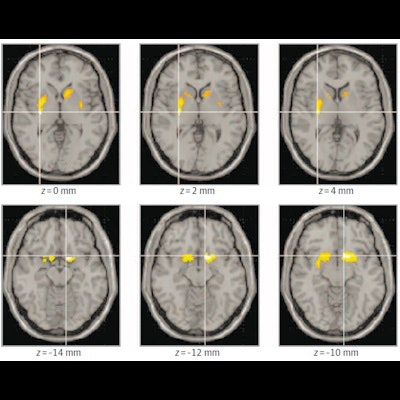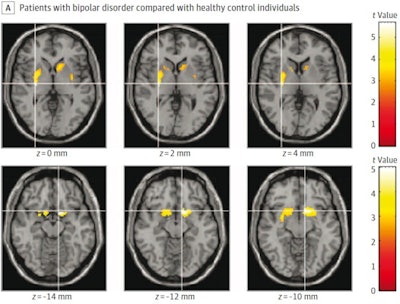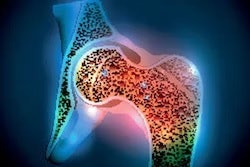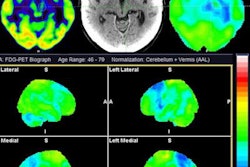
Brain PET imaging has revealed that mania in patients with bipolar disorder may be associated with lower density levels of dopamine transporter (DAT), according to a study published November 2 in JAMA Psychiatry.
A team led by Dr. Lakshmi Yatham of the University of British Columbia in Vancouver, Canada, analyzed PET imaging of DAT brain density in bipolar disorder patients with current and recently remitted mania compared to healthy individuals. Lower DAT density correlated with the severity of manic symptoms, the group found.
"This is the first PET study that assessed dopaminergic transmission in a clinically representative sample of patients with current and recently remitted mania," the researchers noted.
Previous studies have suggested that mania in patients with bipolar disorder is associated with dopamine hyperactivity in the brain and that dopamine transporters play an important role in regulating this activity. But exactly how they do has been unclear.
To explore the connection, Yatham and colleagues recruited patients with bipolar disorder from a care referral center for mood disorders in Vancouver. The research included 26 patients with bipolar disorder (9 with current mania and 17 with recently remitted mania) and 21 matched healthy individuals. Study participants underwent PET imaging with the radiotracer carbon-11 d-threo-methylphenidate, which binds to DAT and reveals its density on the scans in areas of the brain involved in emotional and behavioral functions.
 Areas in striatum where carbon-11 d-threo-methylphenidate nondisplaceable binding potential
Areas in striatum where carbon-11 d-threo-methylphenidate nondisplaceable binding potentialwas significantly lower. Image courtesy of JAMA Psychiatry.
Results showed that DAT radiotracer binding was significantly lower in patients with bipolar disorder in the right putamen and nucleus accumbens areas of the brain, as well as the left putamen and caudate. The reduction in binding was more extensive and pronounced in patients with current mania, while patients with recently remitted mania had lower binding in the left striatum but not the right, according to the findings.
"These findings indicate that mania was associated with reduced DAT density and remitted mania was associated with DAT levels that approximated those present in individuals without bipolar disorder," the authors wrote.
The study is consistent with the dopamine hyperactivity hypothesis of mania, as reduced DAT is expected to result in increased synaptic dopamine levels with a subsequent increase in dopamine transmission, the investigators noted.
Ultimately, the study could further illuminate the neurobiology of bipolar disorder, they wrote.
"Future research in this area needs to focus on ascertaining how DAT density is altered across depression, mania, and euthymia to understand the role of DAT in pathophysiology of bipolar disorder," the authors concluded.





















